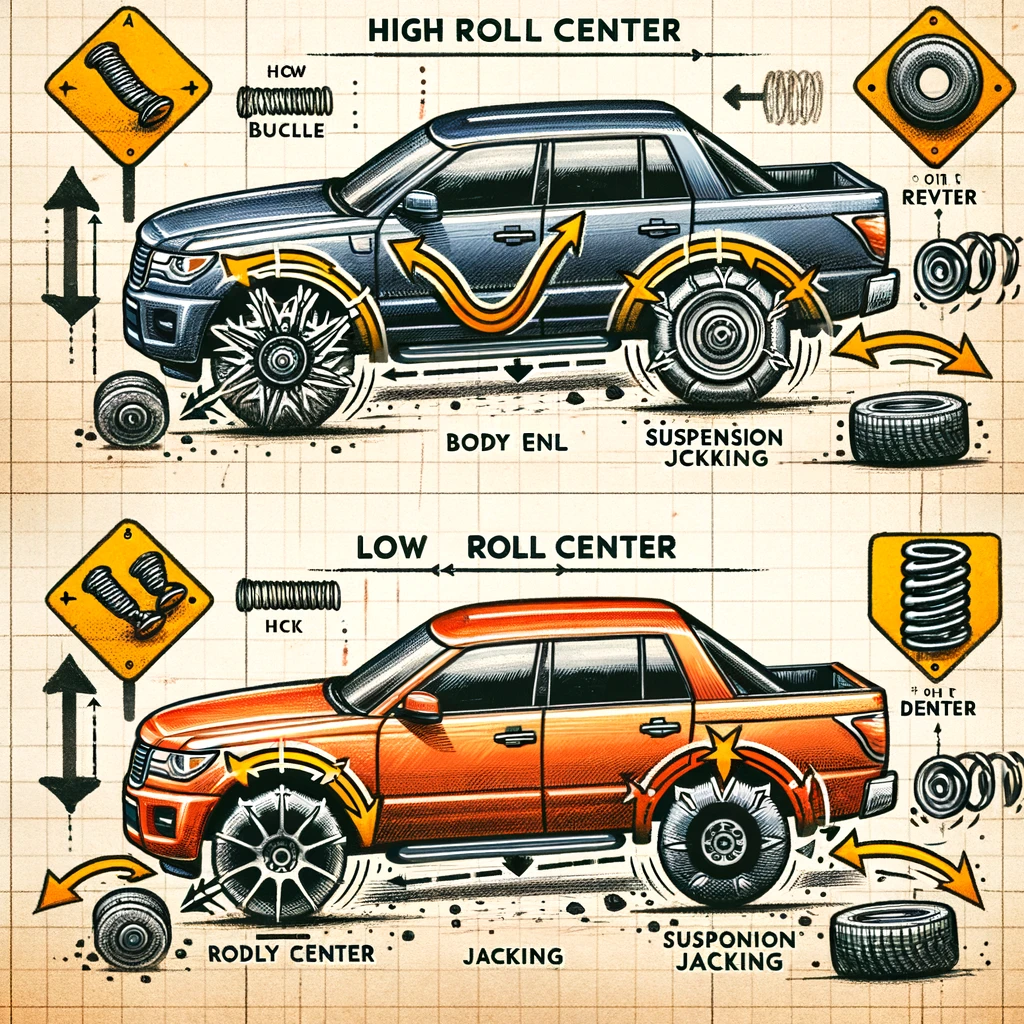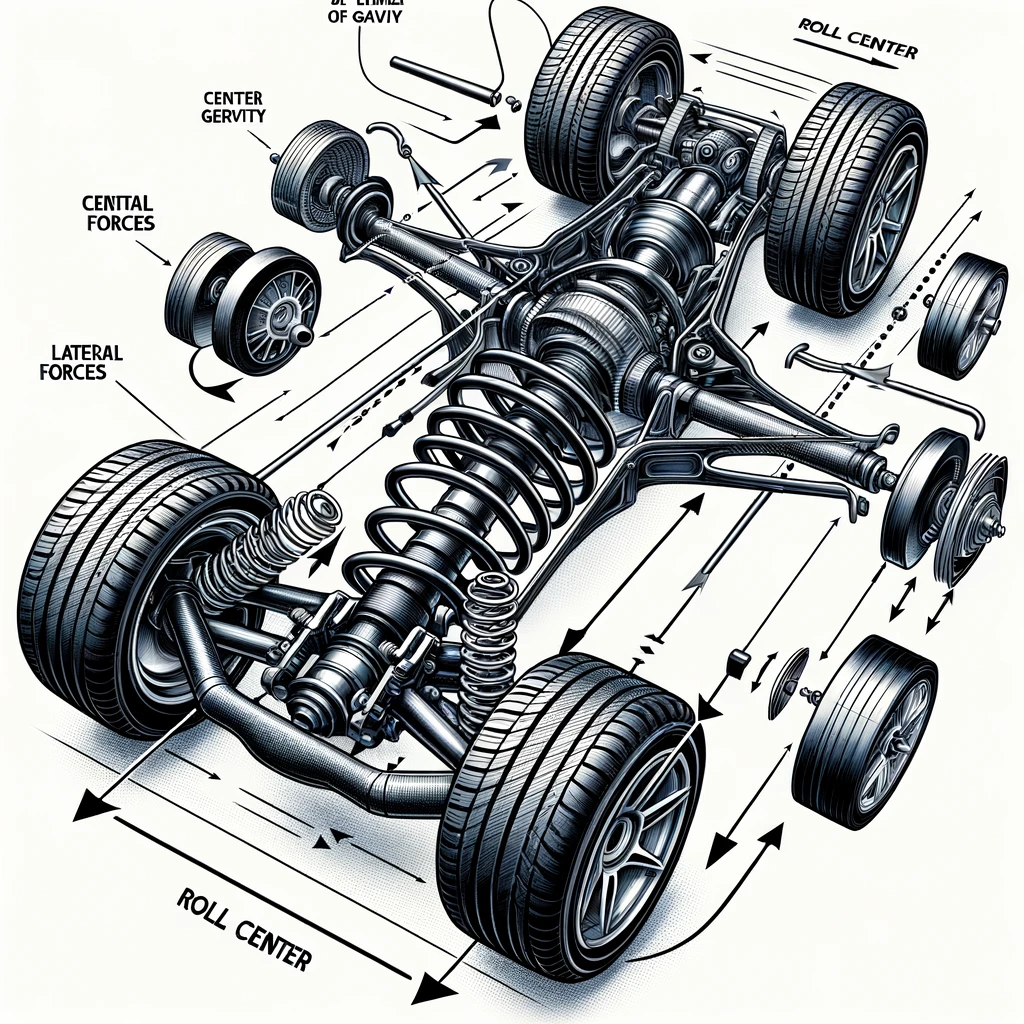Roll Center and Vehicle Dynamics Explained
In the complex field of automotive engineering, the concept of roll center stands as a cornerstone in understanding and improving vehicle dynamics. It plays a pivotal role in how a vehicle responds to lateral forces, especially during cornering, significantly influencing its stability and handling characteristics. This article aims to demystify the concept of roll center, explore its relationship with the vehicle’s center of gravity, and delve into its impact on vehicle performance.
Understanding Roll Center
At its core, the roll center is a theoretical point around which the vehicle’s chassis rolls or pivots sideways. This point is crucial because it is where lateral forces are exchanged between the wheels and the vehicle body, determining how the vehicle behaves under cornering forces. Every vehicle has two roll centers – one at the front and one at the rear, directly influenced by the suspension geometry.

The Science of Suspension
The suspension system, which connects the wheels to the vehicle body, significantly impacts the roll center’s position. Depending on the type of suspension (independent or solid axle), the roll center can vary, altering how the vehicle reacts to lateral acceleration. Understanding this relationship is essential for optimizing vehicle design for specific performance requirements.
Roll Center and Center of Gravity: A Critical Relationship
The distance between the roll center and the vehicle’s center of gravity is a critical factor in determining the vehicle’s tendency to roll in corners. A larger distance means a higher likelihood of body roll, affecting the vehicle’s stability and cornering speed. Optimizing this distance is a delicate balance, requiring careful consideration of various design factors.
Suspension Jacking: A Key Consideration
An often-overlooked aspect of roll center dynamics is the phenomenon of suspension jacking. This occurs when the vehicle’s body is raised or lowered due to lateral acceleration, affecting wheel alignment and, subsequently, grip and tire wear. Designers strive to minimize jacking to maintain optimal tire contact with the road.
Anti-Roll Bars and Their Role
Anti-roll bars are a crucial component in managing vehicle roll. By connecting opposite wheels across the vehicle, they help distribute the load more evenly during cornering, reducing body roll. However, their effectiveness is directly tied to the roll center’s position, highlighting the importance of precise roll center placement.

Roll Centers in Independent Wheel Suspensions
Vehicles with independent wheel suspension face unique challenges in managing roll center dynamics. These systems require a careful balance between minimizing suspension jacking and optimizing roll center placement to achieve desired handling characteristics without compromising tire performance.
High vs. Low Roll Center: Pros and Cons
The position of the roll center (high vs. low) has significant implications for vehicle dynamics. A high roll center can reduce body roll but at the cost of increased suspension jacking and potential alignment issues. Conversely, a low roll center minimizes jacking but may require additional mechanisms, like anti-roll bars, to control body roll effectively.

Roll Center in Off-Road Vehicles
Off-road vehicles have different requirements, often benefiting from a higher roll center to minimize the use of anti-roll bars. This allows for greater wheel independence, essential for maintaining traction on uneven terrain. However, this design choice comes with its own set of challenges, including increased body roll and the need for careful suspension tuning.
Advanced Techniques in Roll Center Adjustment
Modern engineering offers a range of tools and techniques for adjusting roll center, allowing designers to fine-tune vehicle handling to precise specifications. From adjustable suspension components to sophisticated simulation software, the ability to manipulate roll center has never been more accessible.

Conclusione
The roll center is a fundamental concept in vehicle dynamics, influencing everything from handling and stability to tire wear and fuel efficiency. By understanding and optimizing the roll center’s position, automotive engineers can significantly improve a vehicle’s performance, making it safer, more enjoyable to drive, and more competitive in its class. As automotive technology advances, the importance of mastering vehicle dynamics, including roll center, will only grow, highlighting the need for continued research and innovation in this critical field.
FAQs About Roll Center and Vehicle Dynamics
- What is roll center, and why is it important?
- How does suspension type affect roll center?
- What are the effects of a high vs. low roll center?
- How do anti-roll bars interact with roll center?
- Can I adjust the roll center on my vehicle?

